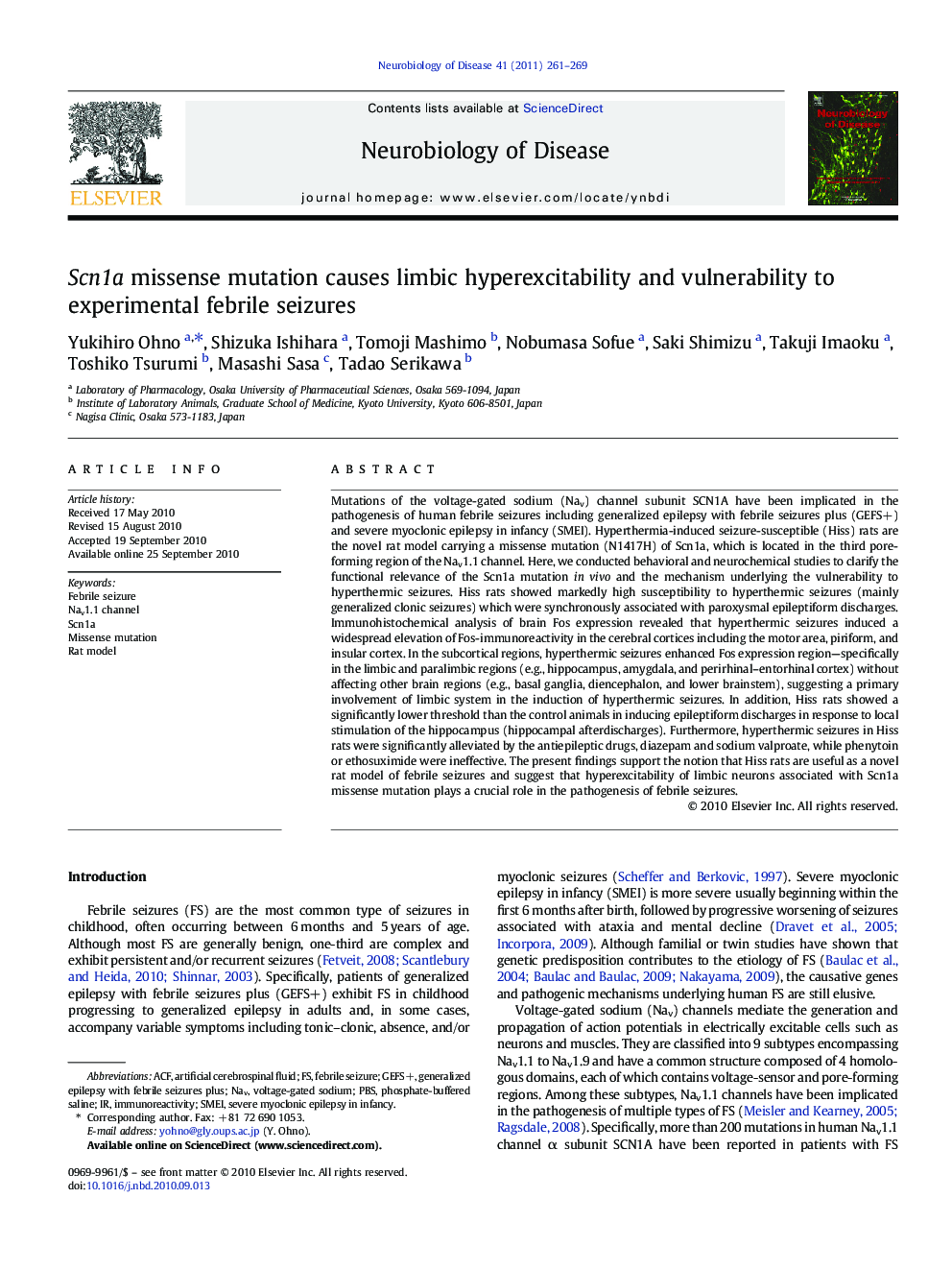| کد مقاله | کد نشریه | سال انتشار | مقاله انگلیسی | نسخه تمام متن |
|---|---|---|---|---|
| 3069589 | 1580698 | 2011 | 9 صفحه PDF | دانلود رایگان |

Mutations of the voltage-gated sodium (Nav) channel subunit SCN1A have been implicated in the pathogenesis of human febrile seizures including generalized epilepsy with febrile seizures plus (GEFS+) and severe myoclonic epilepsy in infancy (SMEI). Hyperthermia-induced seizure-susceptible (Hiss) rats are the novel rat model carrying a missense mutation (N1417H) of Scn1a, which is located in the third pore-forming region of the Nav1.1 channel. Here, we conducted behavioral and neurochemical studies to clarify the functional relevance of the Scn1a mutation in vivo and the mechanism underlying the vulnerability to hyperthermic seizures. Hiss rats showed markedly high susceptibility to hyperthermic seizures (mainly generalized clonic seizures) which were synchronously associated with paroxysmal epileptiform discharges. Immunohistochemical analysis of brain Fos expression revealed that hyperthermic seizures induced a widespread elevation of Fos-immunoreactivity in the cerebral cortices including the motor area, piriform, and insular cortex. In the subcortical regions, hyperthermic seizures enhanced Fos expression region—specifically in the limbic and paralimbic regions (e.g., hippocampus, amygdala, and perirhinal–entorhinal cortex) without affecting other brain regions (e.g., basal ganglia, diencephalon, and lower brainstem), suggesting a primary involvement of limbic system in the induction of hyperthermic seizures. In addition, Hiss rats showed a significantly lower threshold than the control animals in inducing epileptiform discharges in response to local stimulation of the hippocampus (hippocampal afterdischarges). Furthermore, hyperthermic seizures in Hiss rats were significantly alleviated by the antiepileptic drugs, diazepam and sodium valproate, while phenytoin or ethosuximide were ineffective. The present findings support the notion that Hiss rats are useful as a novel rat model of febrile seizures and suggest that hyperexcitability of limbic neurons associated with Scn1a missense mutation plays a crucial role in the pathogenesis of febrile seizures.
Research highlights
► Hiss rats are a novel model carrying a missense mutation of Scn1a.
► Hiss rats showed high susceptibility to experimental hyperthermic seizure.
► Hyperthermic seizure in Hiss rats accompanied hyperexcitation of limbic neurons.
► Seizure in Hiss rats was ameliorated by drugs effective for febrile seizures.
Journal: Neurobiology of Disease - Volume 41, Issue 2, February 2011, Pages 261–269